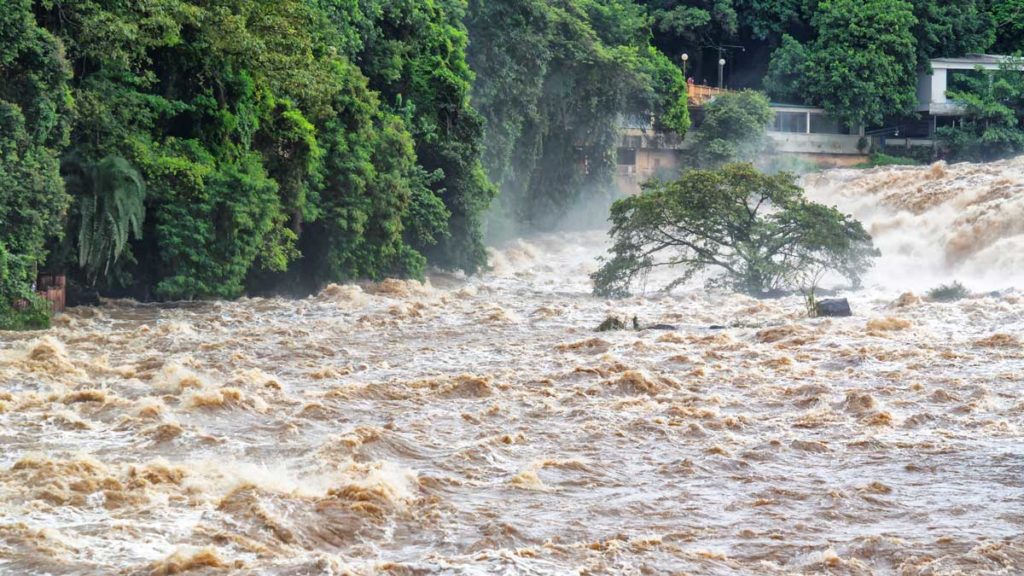Introduction
Water damage arises from a variety of sources, frequently with very costly consequences around damage to buildings, internal decorations and fittings, mechanical and electrical systems, machinery and stock, also clean-up/drying costs and consequent Business Interruption implications. Flooding from rivers and the sea and surface water run-off are the most obvious causes of water damage and are the subject of a specific toolbox talk, but there are other risks responsible for numerous and large losses, including leaking pipes, water systems and appliances as well as water ingress into the building envelope through roofs, walls and internal drains.

Affected Premises
Almost all buildings contain plumbing and waste water systems and many have other facilities including hot water central heating systems, air conditioning installations and sprinkler systems, where escape of water/fluid has the potential to cause significant damage. Premises particularly at risk include:
- Multi-storey residential and commercial properties, often with water pressure boosted by pumps.
- Hotels.
- Unoccupied premises.
- Properties with particularly sensitive areas such as computer suites.
- Buildings with flat or multi-pitched roofs, valley gutters and/or siphonic rainwater.
- Drainage systems.
Leaking Pipes
Freezing pipe work is a common cause of leaks after periods of cold weather, but simple preventative measures can minimise the risk, including:
- Water pipes, storage tanks and other water apparatus in unheated or exposed parts of the premises should be adequately lagged/insulated and provided with trace heating where necessary.
- Maintaining “background heating” or installing a frost stat to maintain the temperature in a premises above 4oC. Leaving loft hatches open will allow warm air to circulate in roof spaces where water tanks may be located.
- Isolating and draining water tanks and pipes when premises, or sections of premises are left unoccupied or without adequate heating.
- Where possible placing fire sprinkler systems on ‘air’ through winter months.
Leaks can also commonly arise due to:
- Faulty or poorly installed/maintained plumbing in older properties.
- Incorrectly installed modern plastic push fit type fittings.
- Incorrectly installed or blocked waste water/sewerage systems.
- Overflowing/failure of water storage tanks and water heaters.
- Physical damage such as impact by vehicles.
- Vandalism
- Inoperative condensate drainage systems for air conditioning equipment.
Mitigation measures can include:
- Using only reputable Plumbers and Heating Engineers, preferably members of a recognised professional body such as CIPHE (Chartered Institute of Plumbing & Heating Engineers)
- Maintenance and inspection regimes for water and waste water systems including timely investigation of evidence of leakage such as damage to decorations, damp patches, mould growth and odours.
- Installation/identification of readily accessible stopcocks to isolate installations from the mains supply. In multi-occupancy premises stopcocks for individual units will allow the water systems to be isolated from shared supplies. Ensuring occupiers know the location of the stopcocks is essential. Stopcocks should be checked regularly to ensure proper operation and if necessary their location clearly labelled.
- Installation of proprietary automatic control valves activated by water flow detectors to automatically cut off the water supply in the event of prolonged water flow, which is likely to be indicative of a leak or a tap left running inadvertently potentially leading to overflowing of a bath or sink.
- Inspection and maintenance of water tanks and vessels including the proper operation of float valves.
- Prohibiting disposal of cooking fats in drains and disposable nappies, sanitary products and similar in WCs.
- Rerouting pipework and fittings away from areas at risk of accidental and impact damage.
- Training of staff to isolate sprinkler systems from the water supply in case of damage/leakage.
- Ensuring an adequate level of security to premises to deter vandals, squatters and other would be trespassers.
- Regular inspection and maintenance of air conditioning units.
- Sensitive areas such as computer suites should be not be located in low-lying or basement areas and should be away from water storage tanks and fluid carrying pipework.
Roofs and Rainwater Goods
Poorly designed and/or inadequately maintained Roofs and Rainwater Goods (gutters, drain pipes, underground drains) can cause precipitation to enter a building through the roof covering, over flashings or eaves or through elevations (damp) from overtaxed gutters/drainpipes. Back flow from external or internal drains into the building can potentially include surface and foul water.
Mitigation measures can include:
- Modification of rainwater systems to increase capacity. Measures may include fitting additional/larger drainpipes, fitting overflow
weirs to gutter ends and relining valley gutters. - A preventative maintenance programme undertaken by competent contractors probably including:
- Regular inspections of the roofs, particularly any flat roofing with necessary repairs and renewal of roof coverings undertaken as required.
- Regular inspection, cleaning and if necessary repair of gutters and downpipes with frequency determined by assessment/experience,
these measures being particularly important for roofs with Siphonic drainage where clear gutters and downpipes are essential for effective operation of the system. This should be undertaken at least annually. - Periodic inspection of gratings and underground drains, the latter possibly involving CCTV surveys, with clearance and repairs undertaken as necessary.
Technical Talks is our series of risk management articles, produced by our in-house team of portfolio underwriting, risk managers and surveyors, offering support and guidance for you and your clients in relation to everyday business solutions.